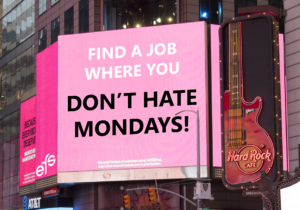Why Can’t NIH Study Sections Operate More Like Journal Reviews?
Why can’t NIH Study Sections operate more like journal reviews? I’ve been publishing in scientific journals for over 15 years, and have served as a manuscript reviewer and editor plenty of times. The process involves ONE team of reviewers, who see the first submission and any subsequent edited versions of the same article. I can only recall one time when I declined to see an edited re-draft, and that was because my review was much less favorable than the other reviewers’. I felt that my second review would be negatively slanted, and I didn’t want to be a roadblock to the authors. (Is this a “nice” attitude from a female scientist? If I were male, would I have made the same choice? Perhaps that will be a future blog post!)
I have also been submitting NIH grant proposals for nearly 15 years. What has become apparent in my recent Study Section reviews is that the assigned reviewers are NOT the same as the original reviewers. So the first team of 3 scientists weighed in and gave me their suggestions. With my co-investigators, we then respond to their critique and resubmitted the proposal. Then a different team of scientists read the resubmission, and add their NEW critiques. This results in an ever-changing goalpost. To use a sports analogy, when you play soccer you are aiming for one goal, and that goal is fixed. Can you imagine playing soccer if the goal moves?!
If you have ever served as an editor, you know exactly what I’m talking about, and may have used this phenomenon to your advantage. The initial reviewers weren’t as enthusiastic about the article as you were, and you want to “rescue” the publication. So you ask the authors to make a few changes and then re-upload it as a new submission. This allows you, as the editor, to send the article to different reviewers. Voila! New more-positive reviews, and the authors have feedback they can work with. Success!
With NIH and perhaps other federal funding agencies, there are TWO shots at funding for a given proposal. Yes, yes, I know about ways to work around that. But if one of those opportunities is burned by having a different set of reviewers, then your precious time is wasted. Those months putting together the proposal are wasted. Your tenure or non-tenure clock is ticking. And now for sure you’ll have a new set of scientists looking at your next submission, because now you have to re-craft those ideas into a NEW (A0) submission. So the goalposts have moved again.
POLL TO THE READERS: Have you experienced this? How did you respond?
Home Page ImageCreator: ABCFreePic ??
Source: https://images.app.goo.gl/GqbZ5twpUXzoca1a9






2 Comments
Everyone is a critque. Yet, I do appreciate someone taking the time to respond to my proposals with positive criticism
However, if the judges keep changing, then the opportunity to succeed keeps diminishing –especially if we only get two attempts. Seems like we should be able to send a grant popsoal and get two shots with the SAME judges. That evens the playing field.
I dont think that is asking for too much, do you?
Unfortunately I don’t think NIH really cares about anyone’s tenure clock or the time spent on a submission… they are tasked with spending tax dollars in a way that will yield benefits for public health, and that’s their primary concern. Obviously they want to keep good scientists in science, but only if they can make meaningful contributions. I get the frustration from the grant writer’s perspective–I’ve been there and lived to bitch about it! But from a program officer’s perspective I think it makes sense why they ask for new reviewers–it’s the same reason why journal articles are reviewed by multiple reviewers, not just one. The diversity in opinions. New reviewers find new flaws (and maybe new strength areas as well!), and at the project development stage of the game, it’s in everyone’s interest to design the study as flawlessly as possible so it yields big dividends down the line in terms of public health impact and dissemination of findings. My feeling is that at least one of the reviewers should be the same… ideally the lead reviewer who sort of has the most invested in the project.